Thursday, 14 January 2010

I am often in a rush. I do not make eye contact while scurrying to my destination. Few do. The endless throngs of people at the subway station all whiz past me. The endless drone of whirring car engines that permeate my ears, the stench of toxic fumes that engulf my nose - they all overwhelm my senses. The day is a blur. Faces are a blur, movements a flurry of motions. I never have time to sit still and observe anymore. Oh how I miss those few precious moments when time freezes, capturing every sliver of life, passages into history…
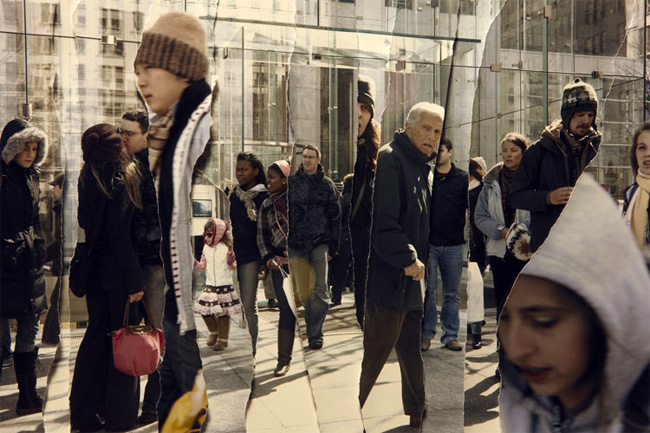
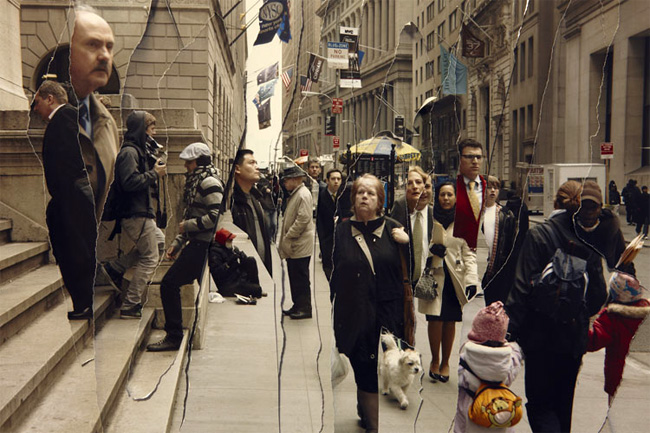
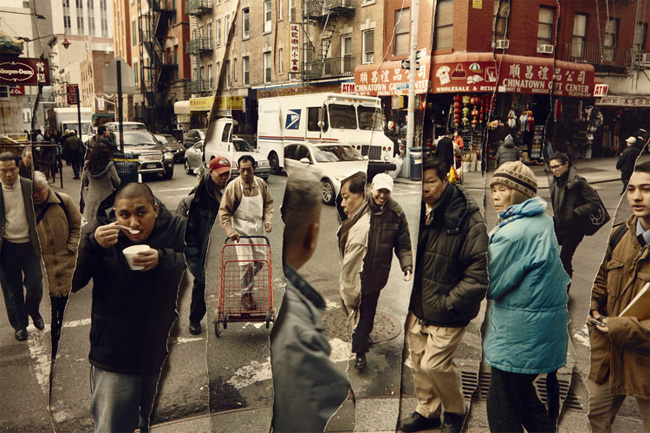
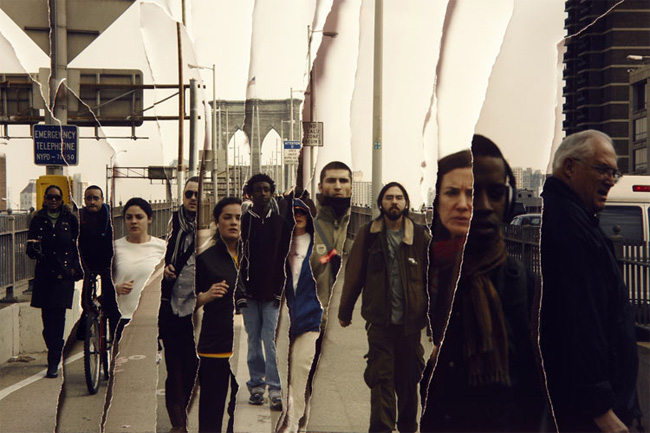
Please visit John Clang’s website to view more of his work.
Tags: Photography
Posted in Uncategorized | 2 Comments »
Wednesday, 13 January 2010
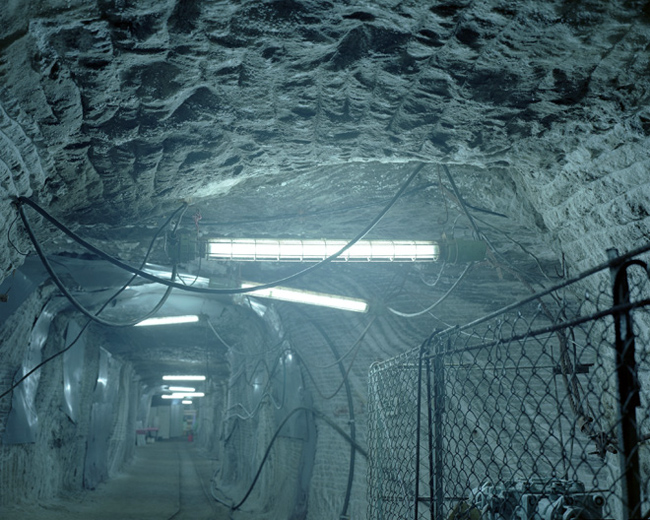
This underground facility is situated within the Solotvyno salt mine near a small Ukrainian village of the same name, close to the Romanian border. It was opened during Soviet times in the 1970s, and operates alongside the Ukrainian State Allergy Hospital which is also located nearby.
The therapy which takes place at Solotvyno is based on a method known as Speleotherapy, an alternative therapy for asthma and other respiratory diseases. This therapy was discovered in Poland in the 1950s when it was noticed that salt mine workers rarely suffered from tuberculosis. Scientists found that the salt-permeated air of the working salt mine helped to dissolve phlegm in the bronchial tubes and also killed the micro-organisms which caused infections – and that this greatly helped patients who were undertaking treatment for asthma.
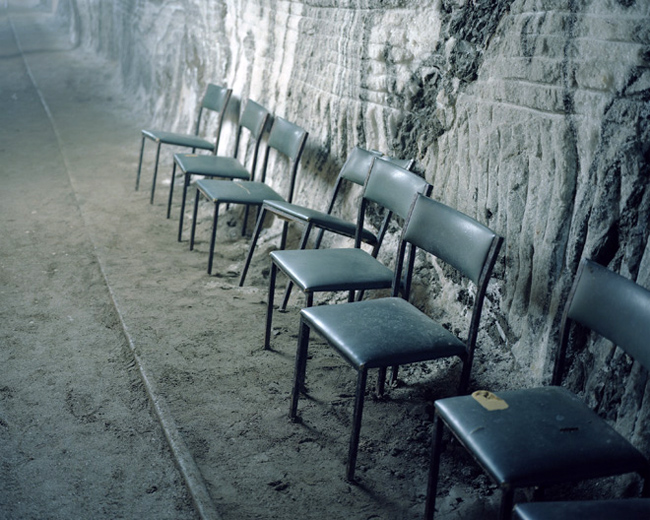
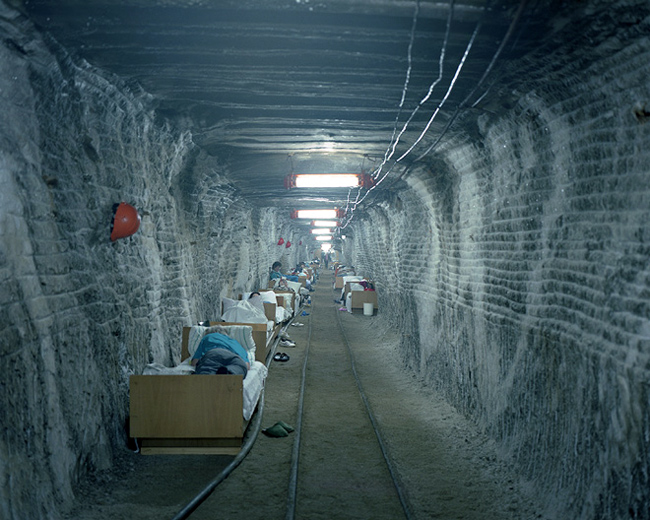
The clinic at Solotvyno salt mine is unique because its tunnels, which are 300 metres below ground level and remain at a steady 22°C (72°F) all year round, are the deepest in the world to be used for such purposes. Around three to five thousand people are treated here every year and there is often a waiting list – in fact, at any one time up to 200 people, a third of whom are usually children, can be receiving therapy. Patients spend an average of 24 days at the facility, using a lift to travel underground for afternoon or overnight sessions. During this time they talk, read or sleep on beds, grouped together in alcoves which are carved out of the rock and lit by fluorescent tubes.
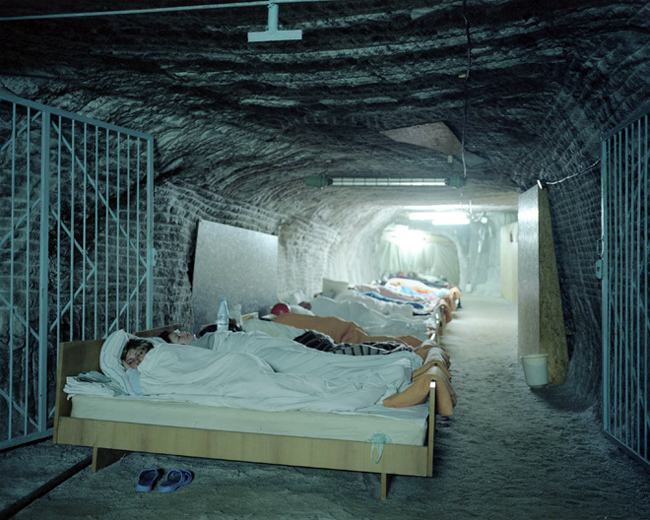
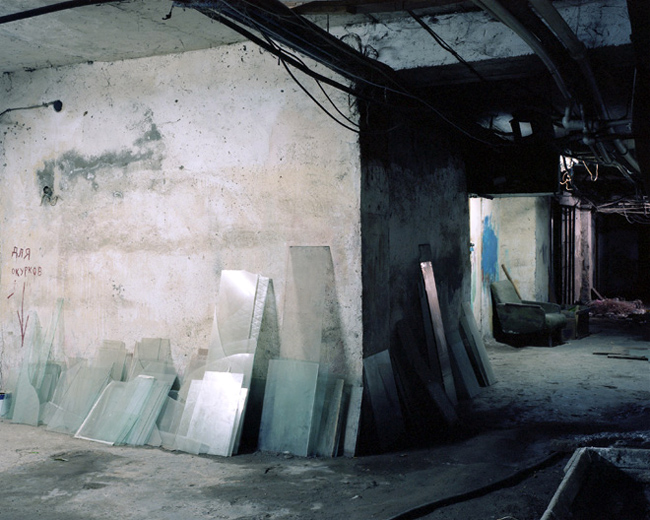
Text and images by Kirill Kuletski.
Tags: Photography
Posted in Uncategorized | No Comments »
Tuesday, 12 January 2010
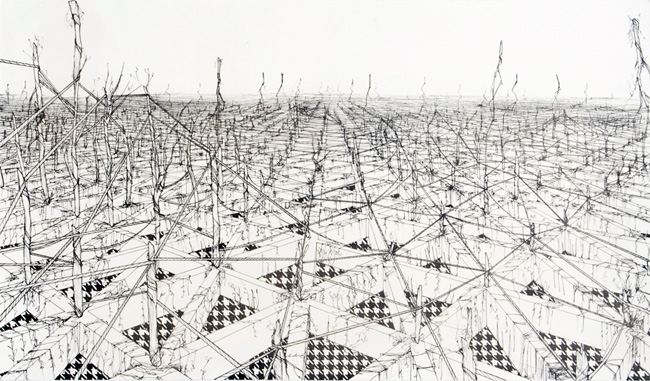
I once considered a career in architecture. I took classes in analysing our relationship with space. While I no longer pursue this profession, those classes left a profound impact in my understanding of space. Sometimes, I even turn the lights off and fumble deliberately in darkness, just to feel the walls that shelter me. When I turn the lights back on, the colours and texture on the walls mean so much more then - they form the environment, the atmosphere and the very soul of the space. They are the ground I stand on and the air I breathe. This is also the feeling I experience when I look at Timofeev’s’s work.
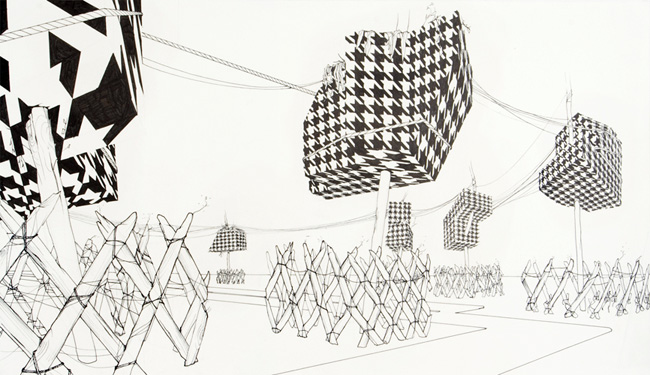
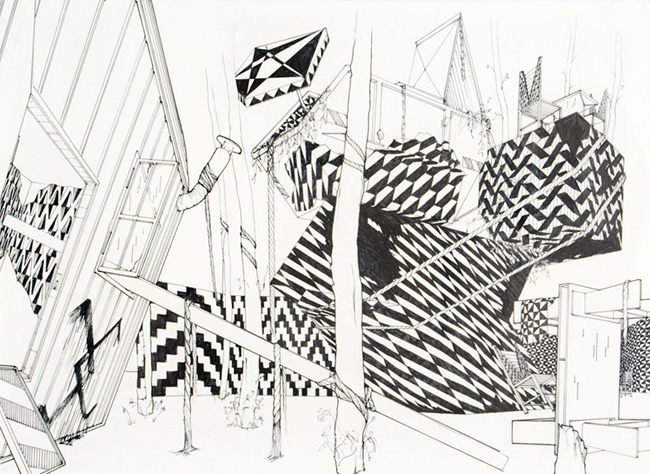

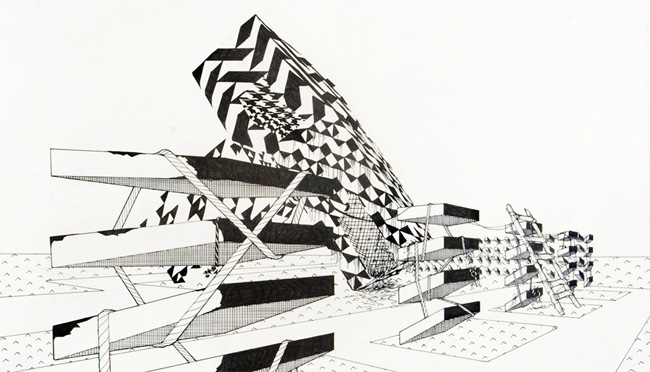
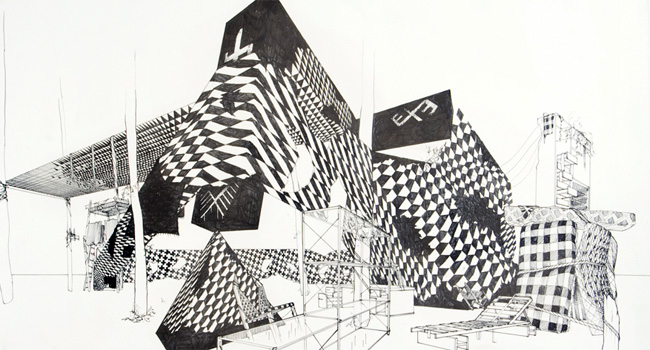
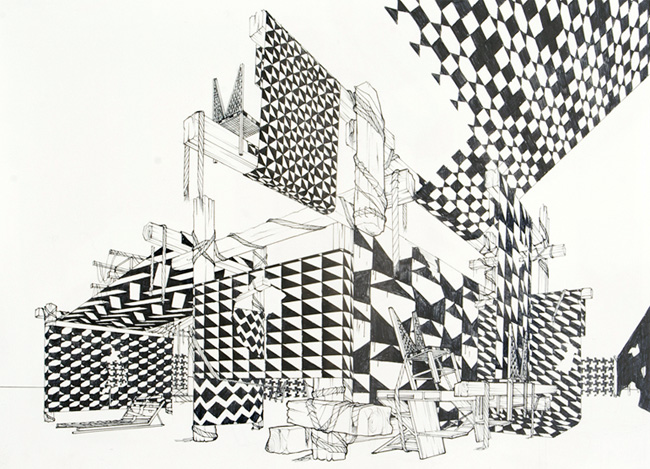
Check out more of Timofeev’s work at his his website.
Tags: Architecture, Art, Sketching
Posted in Uncategorized | No Comments »
Monday, 11 January 2010

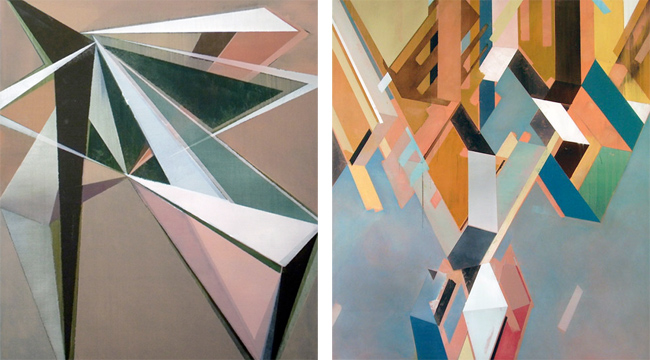
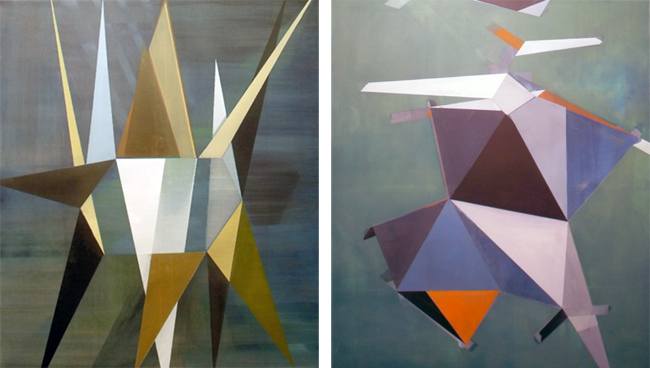
In Kalberg’s most recent work, fragments of imagery are assembled to create unstable tableaux, forms unplaced and dislodged from their original context. Using abstract vocabulary as well as representational segments, the artist constructs a complex world of symbols and signs which border on the edge of recognition, purposely offering the viewer a variety of interpretations.
Dynamic use of colour ranging from subtle pastels to intense hues as well as sharp, angled structures which seemingly float on soft backgrounds come together to create an unfixed and ambiguous aesthetic. Through his referential practice of constructing these indefinite spaces on canvas, Kalberg creates paintings that deal with space both within the works as well as the relationship between the work and the outside world.
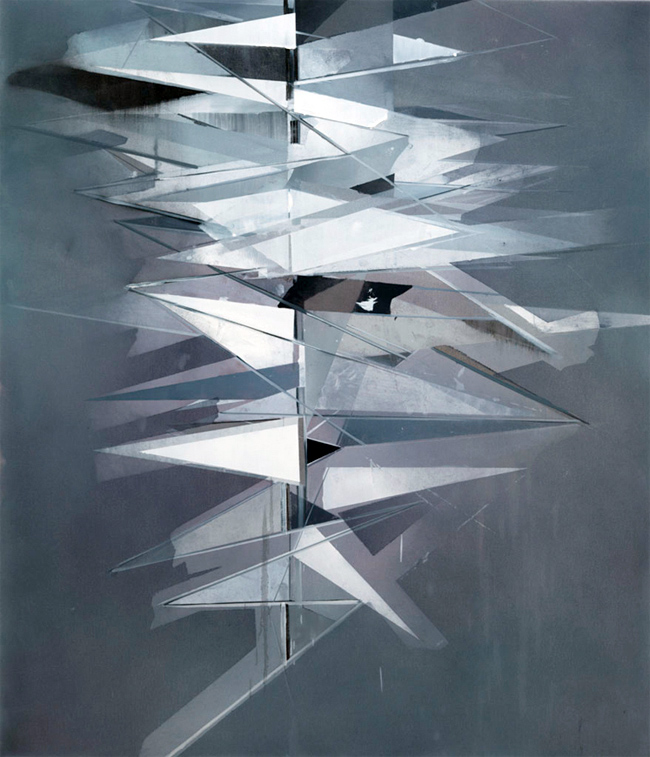
Text sourced from Monte Clark.
Tags: Art, Painting
Posted in Uncategorized | No Comments »
Thursday, 7 January 2010
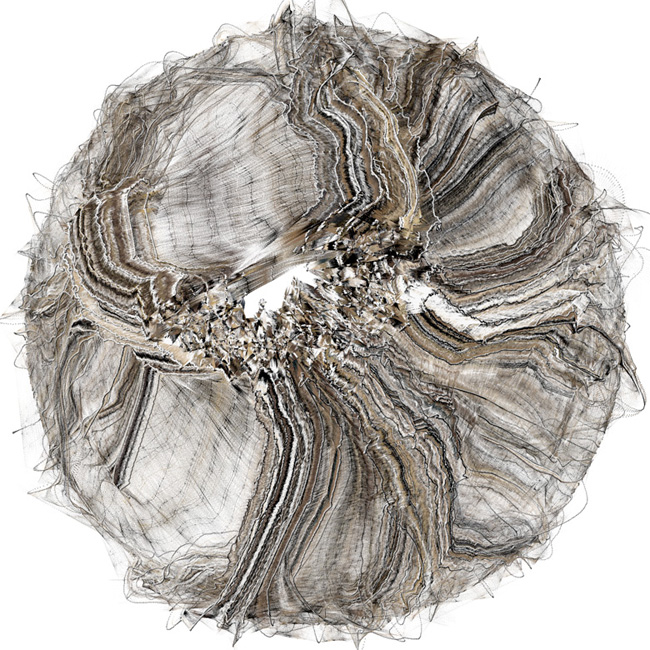
Christopher Langton, one of the founders of artificial life, began his work by studying one-dimensional cellular automata. He thought of one of the states of an automaton as being “dead”. All the remaining states were thought of as “alive”. Langton only worked with automata with the property that if a cell and are its neighbors are dead, then that cell will remain dead in the next generation.
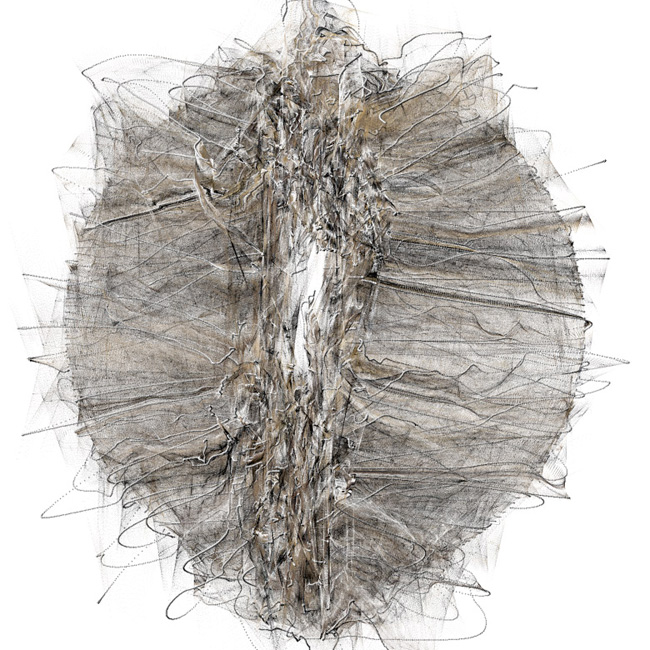
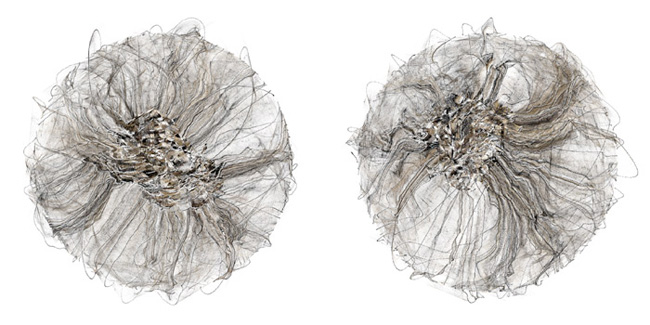
Some CA’s (Cellular Automata)… die out in a few generations or… quickly settle into simple repeating patterns. Langton said that these CA’s were highly “ordered”. Their behavior is… extremely predicatable and easy to describe. Other CA’s… seem to be random. Langton called such CA’s “chaotic”. Their behavior is… completely unpredictable, and can only be described as a mass of unrelated details. But some CA’s display interesting, complex, almost lifelike behavior. Langton said that these CA’s are near the border between order and chaos. If they were more ordered, they would be too predictable; if they were less ordered, they would be too chaotic.
Langton defined a simple number that can be used to help predict whether a given CA will fall in the ordered realm, in the chaotic realm, or near the boundary, on the “edge of chaos.” The number can be computed from the rules of the CA. It is simply the fraction of rules in which the new state of the cell is living. (The rule in which a cell and all its neigbors are dead is not counted, since Langton assumed that the new state in this rule is always death.) He called this parameter “lambda.”
The lambda parameter of a CA is a number between 0 and 1. If lambda is 0, then all cells die immediately, since every rule leads to death. If lambda is 1, then any cell that has at least one living neighbor will stay alive in the next generation and, in fact, forever. More generally, values of lambda close to zero give CA’s in the ordered realm. Values close to 1 give CA’s in the chaotic realm. The edge of chaos is somewhere in between.
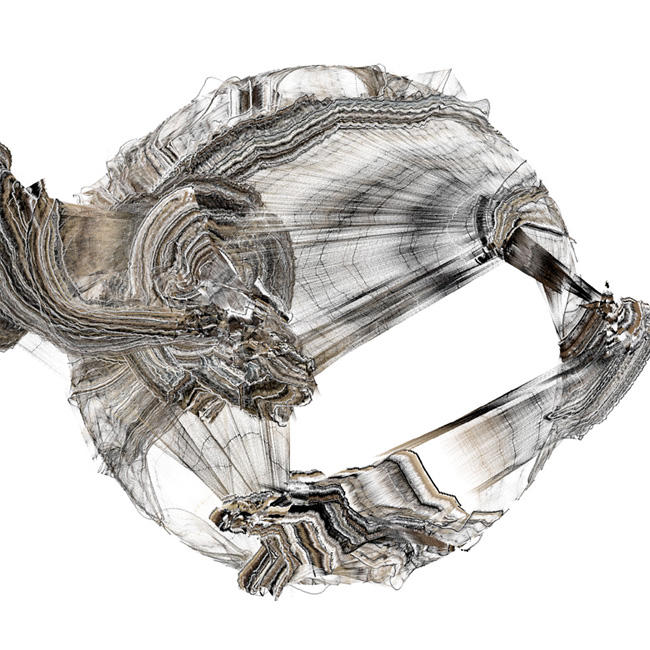
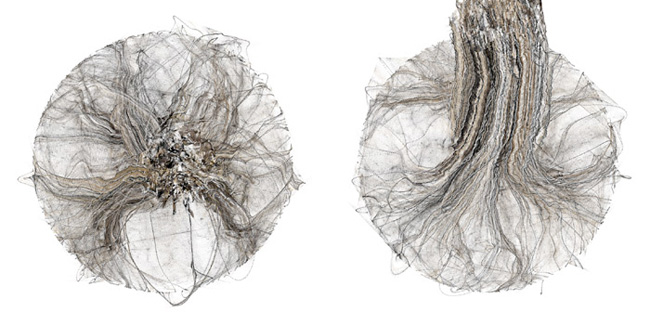
Text sourced from “Edge of Chaos” by David Eck. To view more of Jared Tarbell’s amazing computational explorations, for lack of a better word, please visit Gallery of Complexification. Do take a look at the flash animations as well. They are truly fascinating.
Tags: Art, Mathematics
Posted in Uncategorized | No Comments »
Wednesday, 6 January 2010
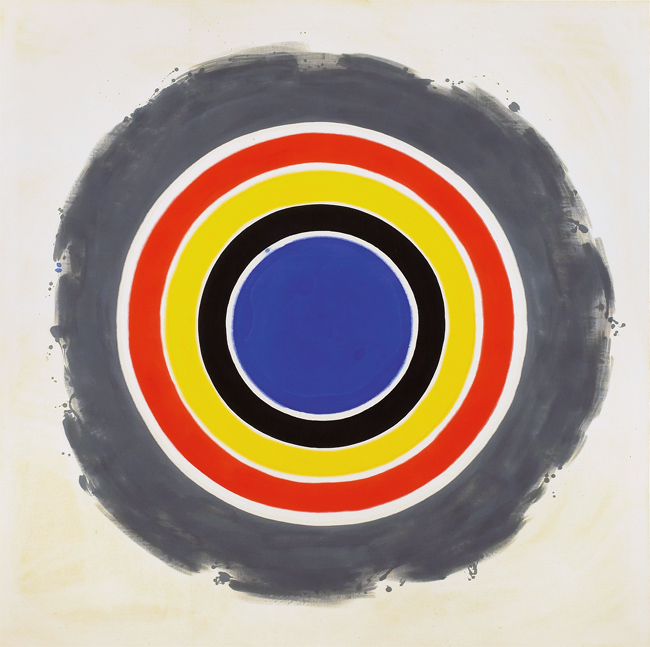
Kenneth Noland, whose brilliantly colored concentric circles, chevrons and stripes were among the most recognized and admired signatures of the postwar style of abstraction known as Color Field painting, … arrived on the scene in the immediate aftermath of Abstract Expressionism. A student of the geometric abstractionists Josef Albers and Ilya Bolotowsky, he found his way toward geometric forms that served as vessels for vibrant washes of color stained into the canvas. In successive series of paintings, he introduced subtle changes into geometric forms that evolved from circles, chevrons, stripes and diamonds and back again to the circle late in his career.
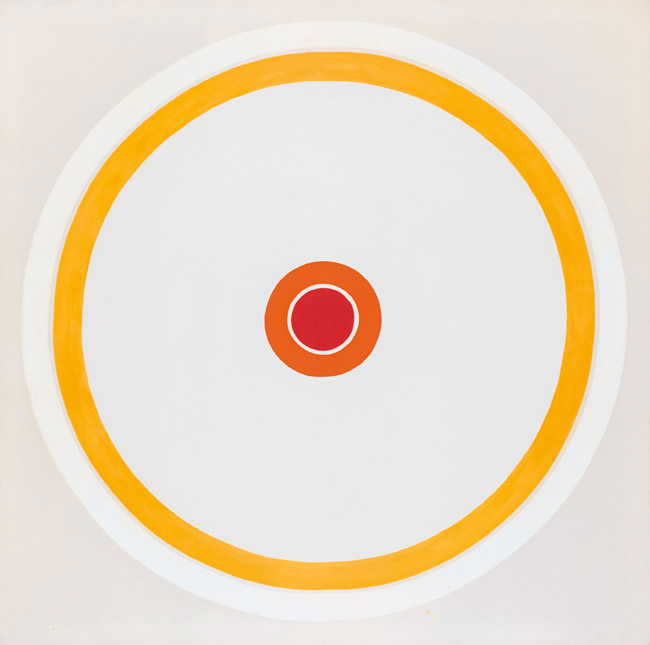
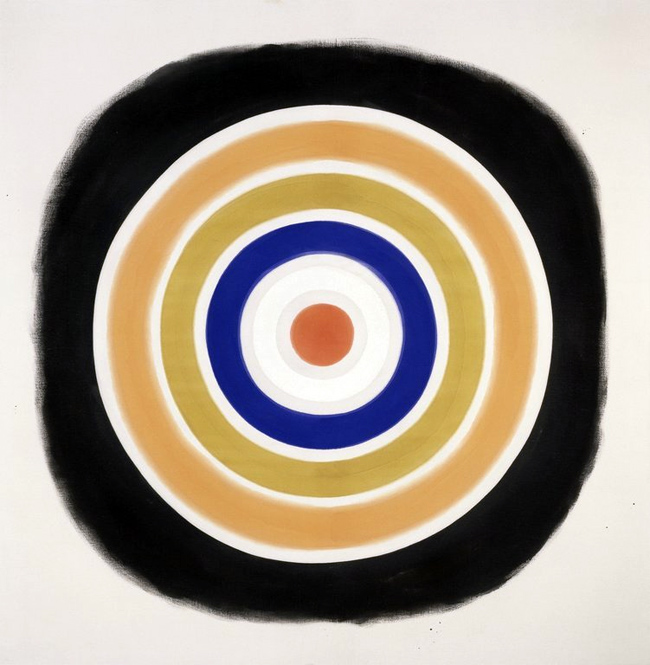
In 1960 the highly influential critic Clement Greenberg proclaimed Mr. Noland and Morris Louis major figures in American art, the rightful successors to Jackson Pollock and Willem de Kooning. Of Mr. Noland’s concentric-circle paintings, he wrote in Art International: “His color counts by its clarity and its energy; it is not there neutrally, to be carried by the design and drawing; it does the carrying itself.”
“He was one of the great colorists of the 20th century,” said the art critic Karen Wilkins, the author of a monograph on Mr. Noland. “Along with Morris Louis and Helen Frankenthaler, he invented a new kind of American abstraction based on the primacy of color. It had some of the philosophic underpinnings of Abstract Expressionism, but without the Sturm and Drang. He picked up where Matisse left off and moved painting into a new visual language.”
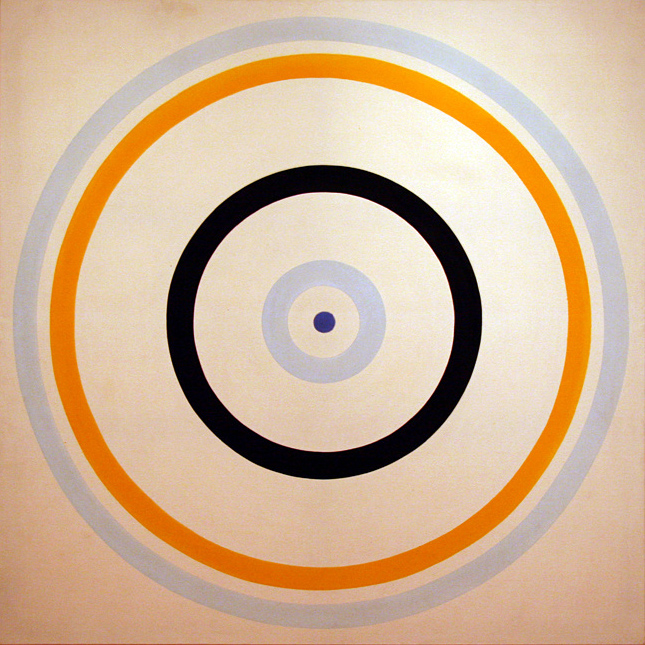
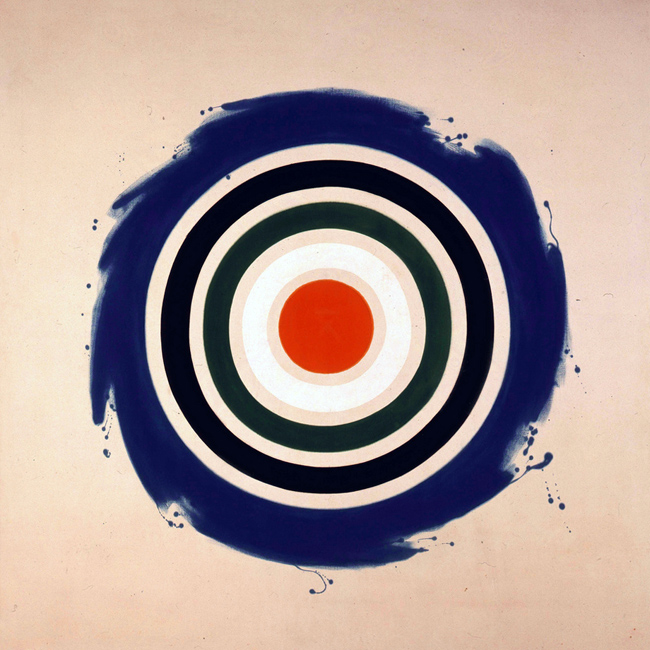
Noland lost his battle with cancer today.
Text sourced from New York Times.
Tags: Art, Painting, Tribute
Posted in Uncategorized | No Comments »
Monday, 4 January 2010

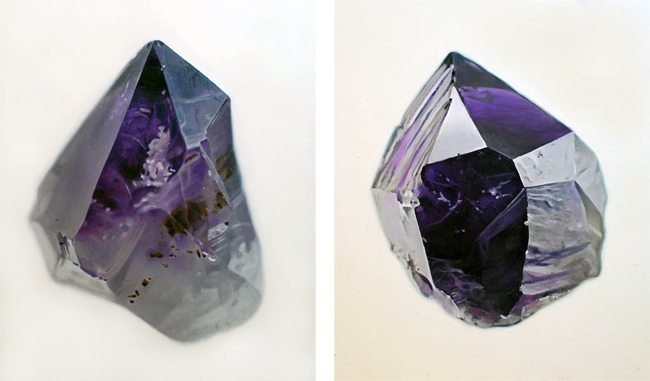
I am attracted to shiny things. Seductive scintillations titillate my nerves, flushing me with excitement. Reflections and refractions - I can resist neither. Why do I fall prey to a glimmer? Why do gleaming objects fondle my heart so?
“Arguments on this point are necessarily speculative, but it’s worth noting that we associate shininess, cleanliness and crisp outlines with objectively favourable attributes. In assessing a mate, a companion or a rival, we spontaneously see bright eyes and teeth, glowing skin and glossy hair as signs of health and quality. As children, we like things that stimulate our nervous systems with clear, vivid colours, contrasts and light.”
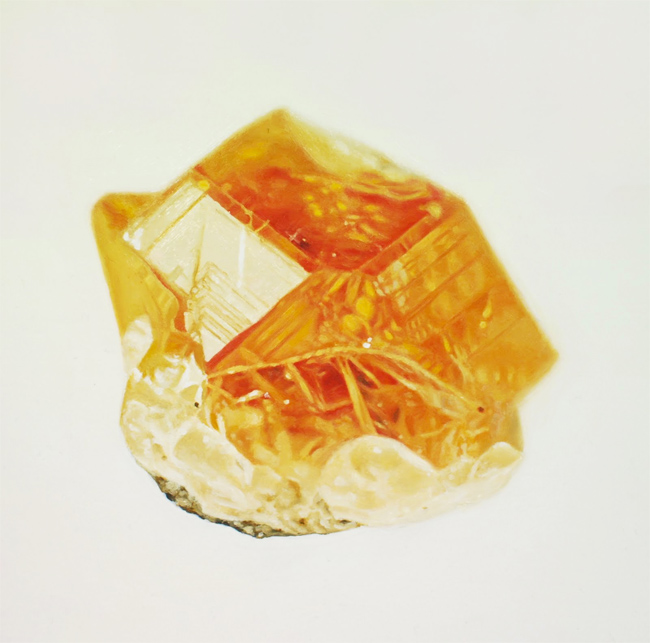
“Art may be seen as a form of play behaviour, in that it relies on elements that matter to our mental and physical development. As adults, our senses and creativity put a premium on media and themes that stimulate our innate mental systems in important ways. Shiny things present intense, characteristic stimuli, and are used in social signals and communication, even in creatures that do not see art in our terms. Such dramatic signals may be based on anatomy or physiology, such as peacock tails or the belling of a stag, or may be collected and arranged as adornments, like bowerbird displays and human medals or finery.”
Perhaps we have come to associate ‘gleaming’ with ‘new’?
Happy New Year.
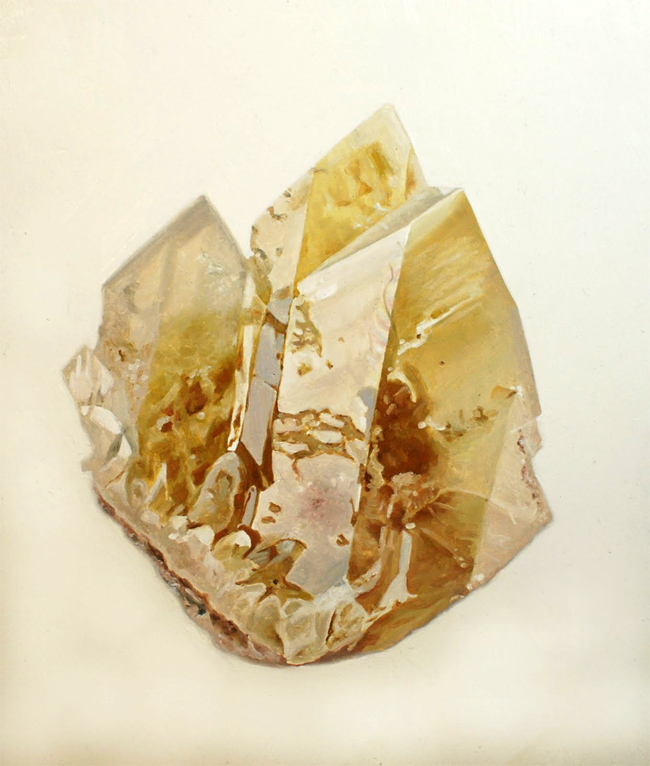
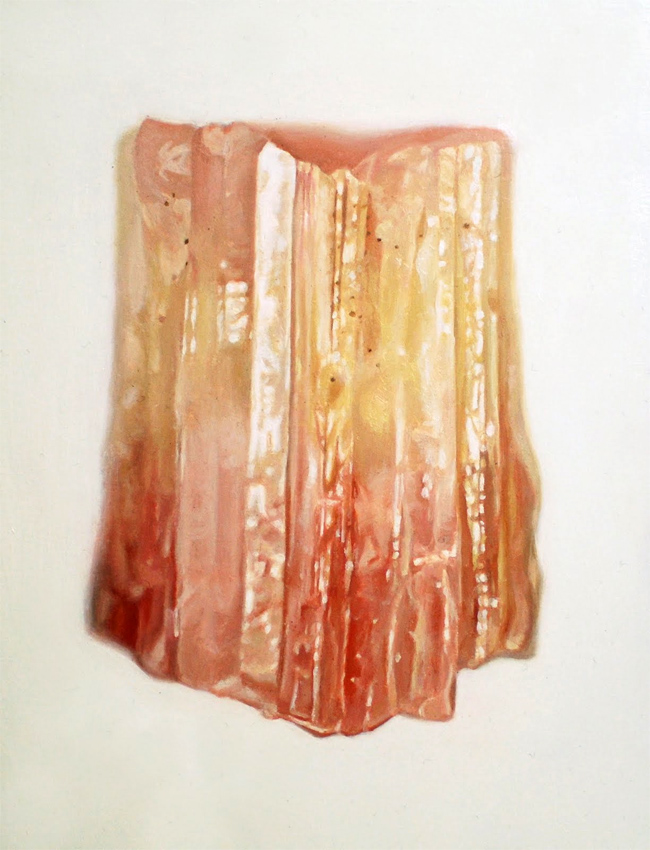
Quotes sourced from New Scientist. Please visit Carly Waito’s blog for more information about her work.
Tags: Art, Painting
Posted in Uncategorized | No Comments »
Tuesday, 8 December 2009
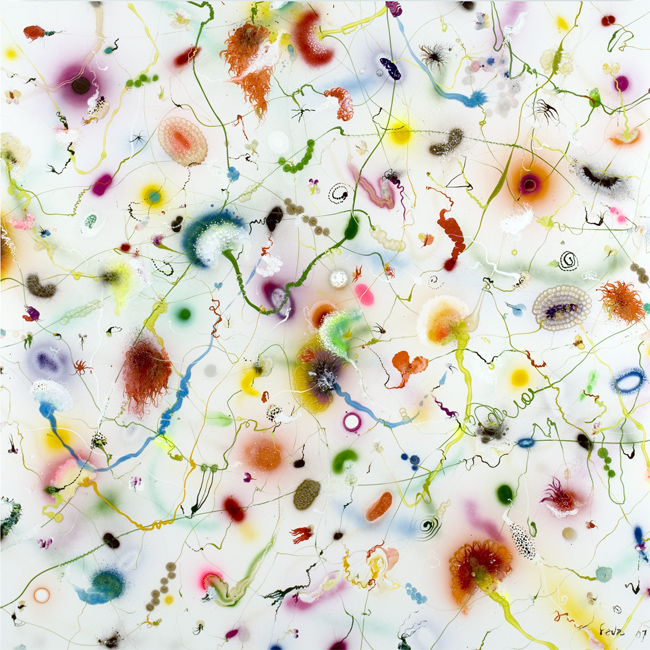
For me, this series is synonymous with a marsh lost in time, a world of wonderful yet scary meanderings with neither time nor spatial limits. A diffused and gloomy light bathes this uncertain world of sprouting flowers, genetic experiments and magical mutations. It’s an explosion of life and forms which, from the infinitely far to the infinitely small, comes forth like fireworks. But, hidden behind the allures of a garden of Eden, monsters and traps lie; honey and poison argue the favours of a nature coming into form.
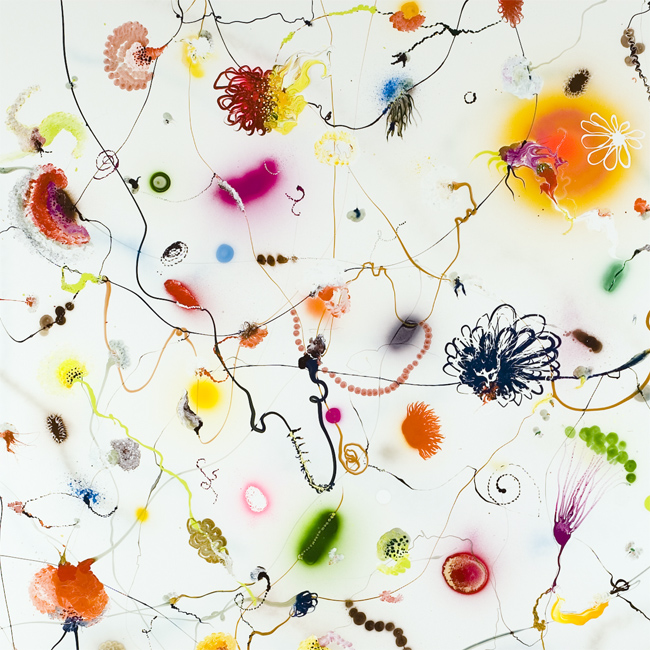

These jungles - braids of lianas and cocoons, cells and crystals - aren’t they the very places where origins took form? The world is at it’s beginnings again, clean and smooth; the eyes slip across it as morning dew. This world is a wonder, but a distance is maintained, such as in the aerial and crystalline landscapes of the Renaissance; here is the world and there is us, and I want to preserve that astonishment in its cold and spectacular form.
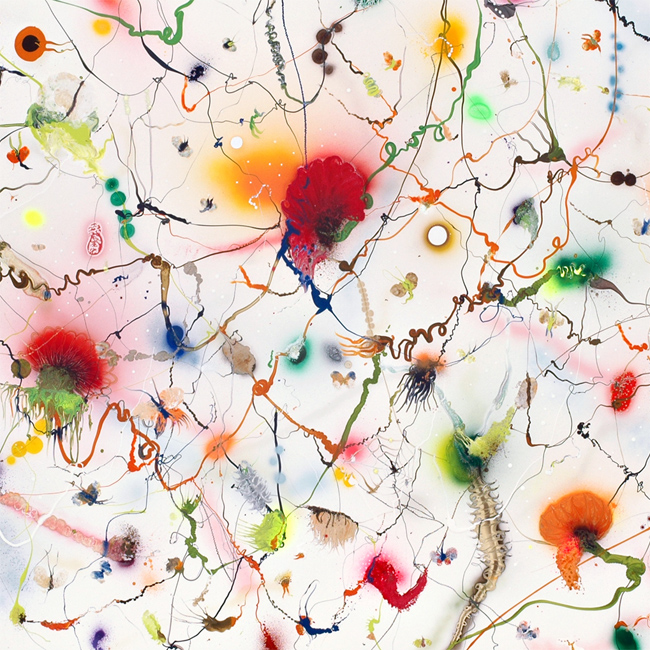
Images and text by Thierry Feuz.
Tags: Art, Painting
Posted in Uncategorized | No Comments »
Thursday, 3 December 2009
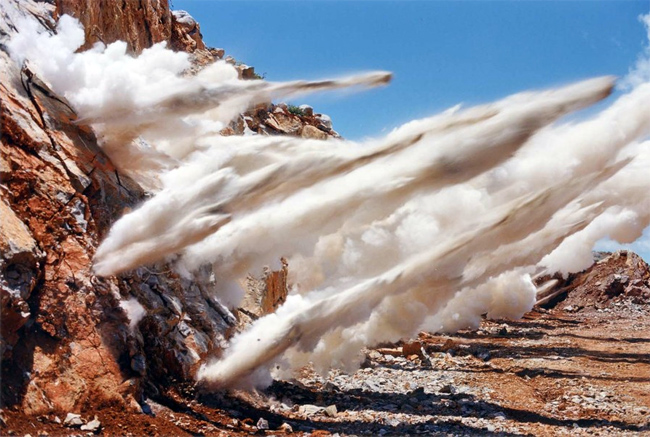
Explosions are beautiful. They bloom like flowers, bits and pieces of a once-solid structure knifing across air - every direction - pacing through in their own trajectories, perhaps fulfilling their sinister potential… Why must this sublime beauty be associated with death?

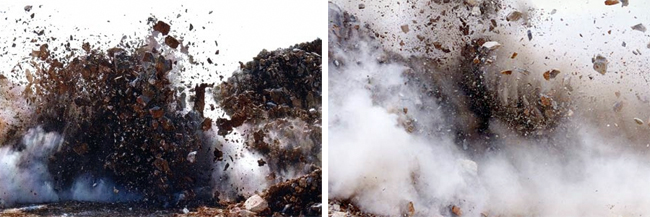

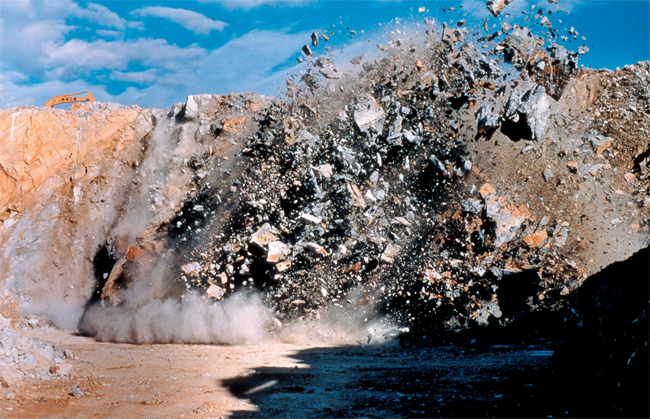
Images by Naoya Hatakeyama.
Tags: Photography
Posted in Uncategorized | 2 Comments »
Wednesday, 2 December 2009
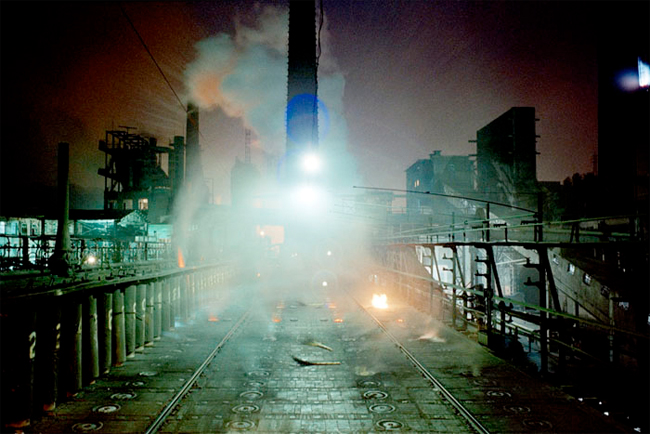
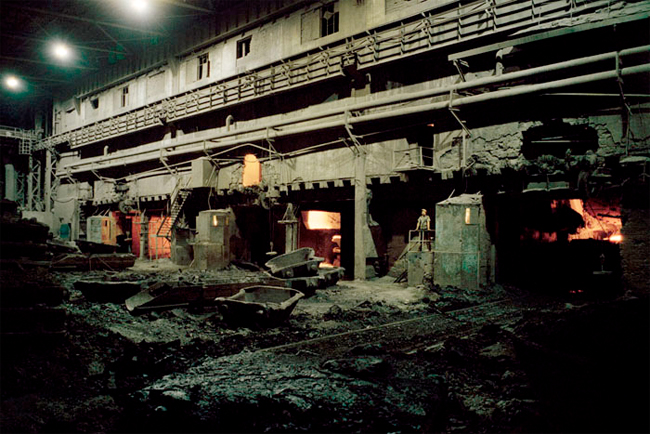
Although I grew up in a developing nation, I have been fortunate enough to live in residential areas far away from industrial sites for my entire life. I remember, when I was young, the television was inundated with commercials depicting the bright future of a fully-industrialised nation - how lives are made so much easier with the latest technology and infrastructure. That may be true, but the journey towards it is often not quite as glorious. Ian Teh’s series, titled Dark Clouds, is “an intimate journey into some of China’s most industrialized cities; an exploration of the darker side of the economy’s bright, shiny facade. It portrays the bleak landscape and daily lives of people living within the country’s coal industry. Here, humanity has become the anonymous cogs that work this great industrial machine in order to perpetuate the ambitions of a Chinese nation. This is a glimpse of another life and another world rarely seen.”
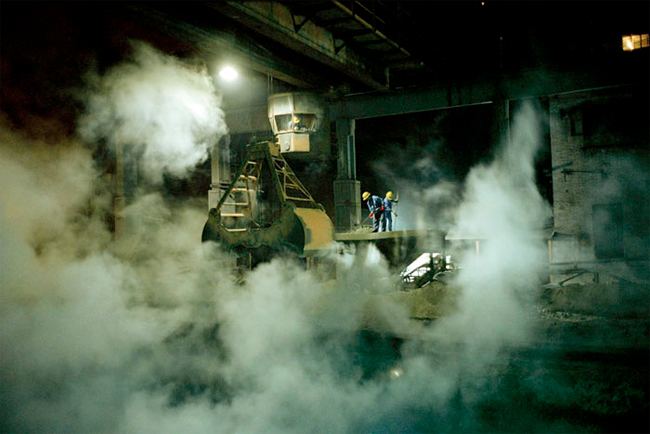
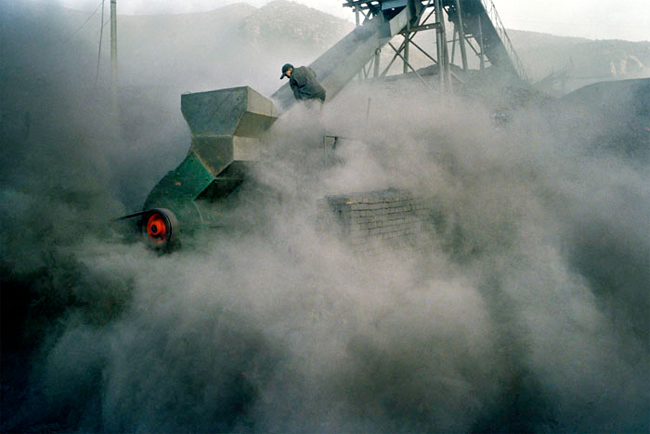
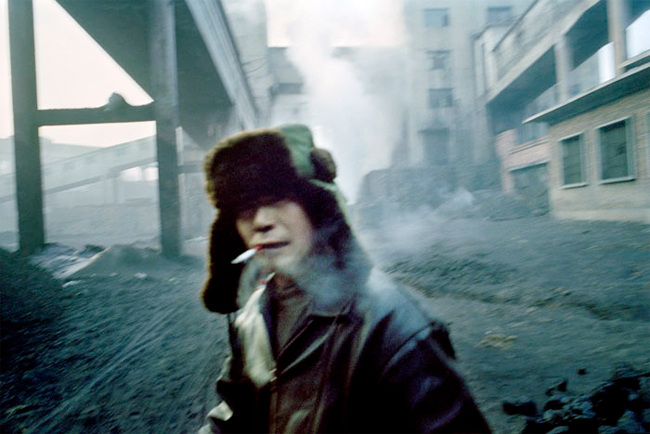
A thick layer of grey ash covers the road leading to an industrial site. The air in the city is acrid and dense. Industrial plants and factories loom out of the haze and disappear once more as one travels beyond the city. Further into the mountains, there are sounds of explosions as workers use dynamite to extract limestone for the steel plants. In another valley, not too far away, miners go deep into a pit shaft in the early hours of the morning.
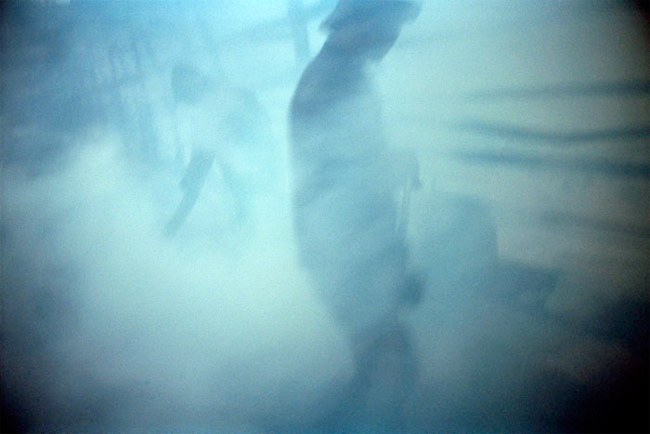

Images and additional text by Ian Teh. Please visit his website to view more of his work.
Tags: China, Photography
Posted in Uncategorized | No Comments »





















































